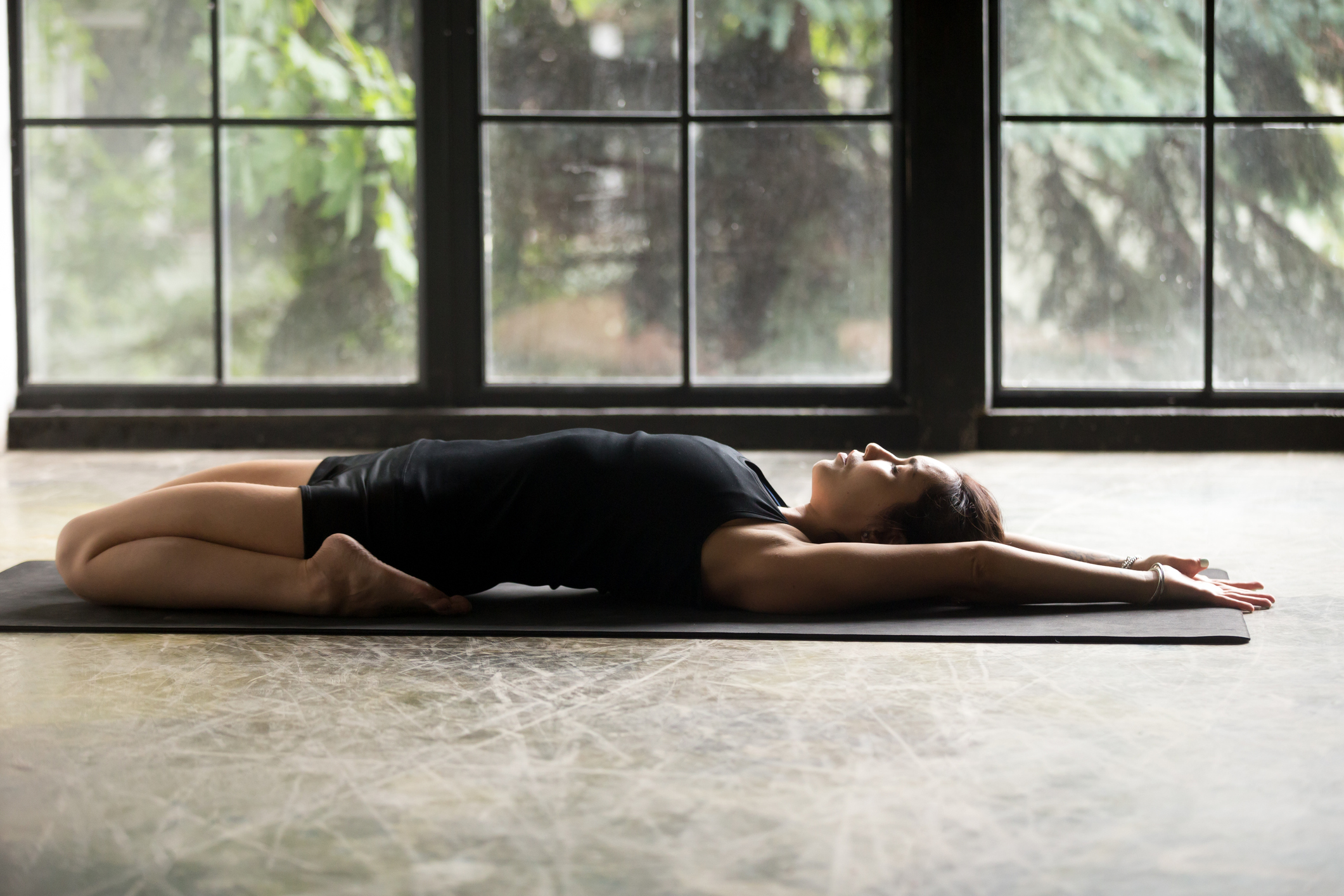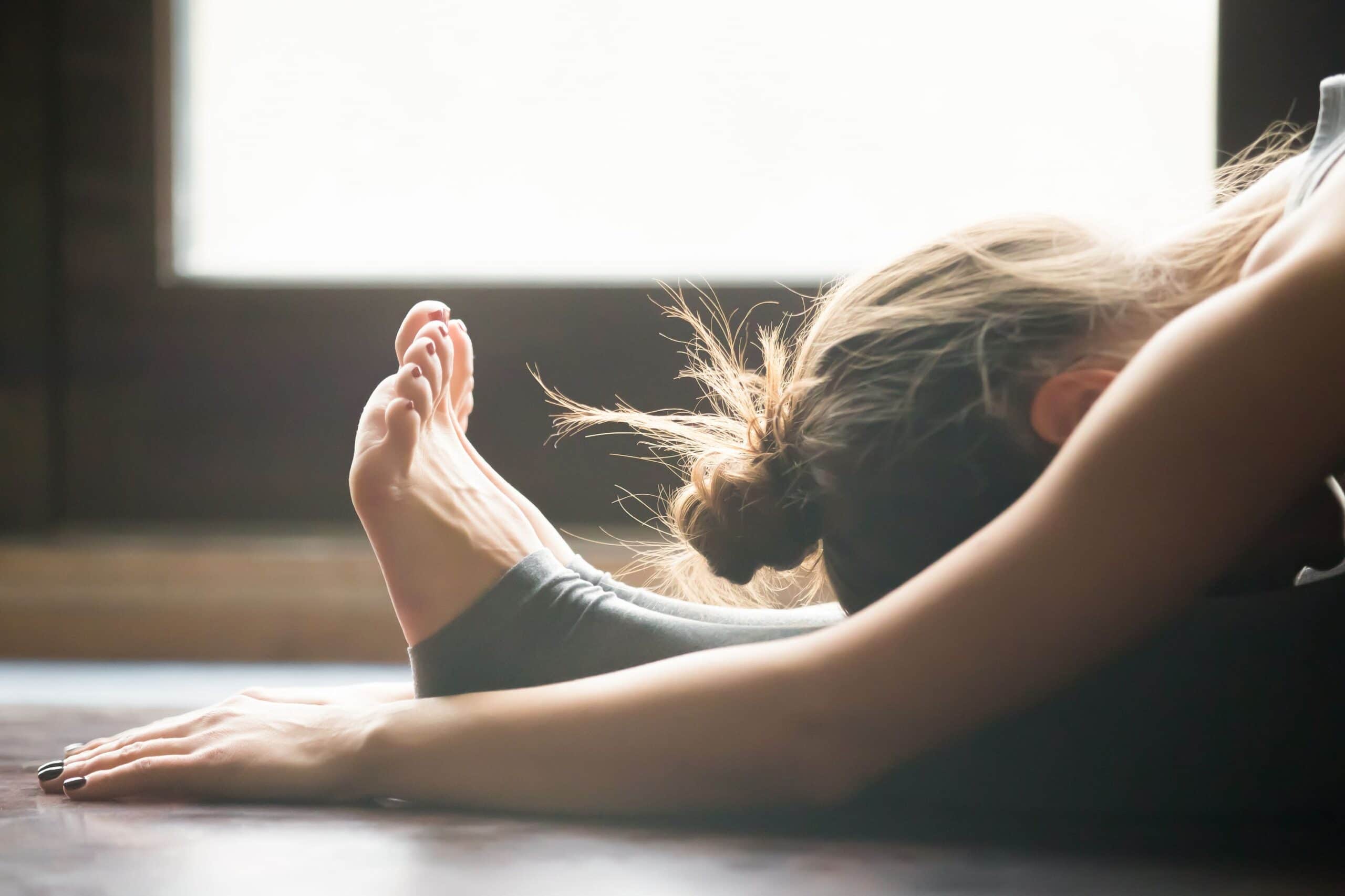I’m not very good at slowing down my brain. Any attempt to meditate ends up with me thinking about what I’m having for dinner, I’m never without music or a podcast playing in the background, and it’s not unheard of for me to wake in the middle of the night thinking about what I need to do at work the next day.
Even though my mind is constantly whirring, I’m extremely lucky to not suffer from any serious mental health issues. Sure, I get low-key anxiety every so often, but it’s never anything major.
However, like so many others, this anxiety became a little more present when the pandemic started. Incidentally, a month or so into lockdown I started using a stretching app on the suggestion of my sister – and it ended up being the saviour I didn’t know I needed.
The app guides you through long-hold stretches for 20 minutes a day, with a 45 minute session once a week.

As we were deep into the first lockdown, I didn’t have any trouble fitting the sessions into my day. I use a programme called ROMWOD (romwod.com), and every day the instructor takes you through a series of poses held for one to five minutes each.
As someone who exercises five or six times a week, I knew I needed to invest a bit more time in stretching to protect my joints and prevent injury – but it ended up being more of a mental release than I anticipated.
Initially, staying in a pigeon or lizard pose for four minutes felt tricky. In all honesty, it’s still difficult – your first reaction is to panic, and the sharp feeling can be quite overwhelming. However, I soon learned to embrace the challenge, particularly with the more uncomfortable poses held for longer periods of time.
It also took a bit of time to get used to the programme I was using – with a tagline ‘Swole & Flexy’, extremely buff athletes demonstrating the moves and the instructor occasionally veering into motivational speaker territory, it feels very American and, sometimes, a tinsy bit cringeworthy – but I can’t deny the results.
The positions might be tough but your body feels immediately better after any routine, plus it’s a dedicated time to slowing down and not thinking about the leak in the bathroom/when you’re going to call your nan/whether you should put a load of washing on.
It’s definitely a mental challenge – we’re so used to pushing ourselves and doing the most, whereas these kind of yin yoga style stretches require relaxing into the pose without forcing anything.
This is to get into the fascia – the connective tissue around the muscle – which isn’t really targeted during the regular cool-down you might do at the gym.
Trying to ‘relax’ into uncomfortable positions like saddle pose (where you sit on your feet with your knees wide and try to lie back, to target the quads) isn’t easy, but it’s the constant challenge that I love – although it took me a while to realise some days will be easier than others, and that’s OK.
Outside of my personal experiences, it makes sense for stretching to be a mental balm. According to Mind, 60% of adults said their mental health got worse during lockdown, and psychotherapist and body language expert Nick Davies says: “As a result, our bodies will be full of unused adrenaline and cortisol from our ‘stress response’ [AKA ‘fight or flight response’] and a few of us are likely to be experiencing ‘learned helplessness’, which is a precursor to depression.”
With our bodies in fight or flight mode, Davies says we need to somehow channel this energy. “Physical movement like stretching (and star jumps) can be the best exercise to quickly rid ourselves of the excess adrenaline and cortisol, allowing our bodies to return to homeostasis, knowing we’ve expressed the physical response,” he explains.
Plus, a lot of stretching routines engage mindful use of the breath. Studies suggest deep breathing can help boost mental health, and the NHS even recommends techniques to help combat stress and anxiety. Personally, I found it helpful to focus my mind solely on counting inhales and exhales – and reminding myself to to go back to the breath whenever my brain starts buzzing.
While I use a specific programme – mainly because I’m lazy and like the ease of logging on every day with the routine waiting for me – any kind of stretching could work, whether doing your own routine or using YouTube videos. I particularly like the yin yoga style of poses held for a long time, because it really encourages you to mentally slow down, plus it feels good for me physically.
It’s something I didn’t know I needed, but I’m glad it came into my life in the midst of our first lockdown. Ever since, I’ve found it easy to carve out time for stretching every day – and I’ve come to rely on the brief moment of stillness and peace it affords me.
Always check with your doctor or physiotherapist before starting a new exercise regime, especially if you have a history of injury, illness or joint problems.





